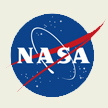Historical Exploration of the Moon
Our lunar missions will enable the pursuit of scientific activities that address fundamental questions about the history of the Earth and moon, the solar system and the universe, and about our place in them. They will allow us to test technologies, systems, flight operation, and exploration techniques that are applicable to future robotic and human missions.
| 1609 |
Lippershey invented the telescope |
| 1610 |
Italian astronomer Galileo Galilei made the first telescopic observation of the moon. |
| 1610 |
Thomas Harriot and Galilei drew first telescopic representation of the moon. |
| 1645 |
Michael Florent van Langren made first map of moon. |
| 1647 |
Johannes Hevelius published first treatise devoted to the moon |
| 1651 |
Giovanni Battista Riccioli named craters after philosophers and astronomers. |
| 1753 |
Roger Joseph Boscovich proved the moon has no atmosphere. |
| 1824 |
Franz von Gruithuisen thought craters were formed by meteor strikes. |
| 1920 |
Robert Goddard suggested sending rockets to the moon. |
| 1959 |
Soviet spacecraft Luna 2 reached the moon, impacting near the crater Autolycus. |
| 1961 |
President John F. Kennedy proposed a manned lunar program. |
| 1964 |
Ranger 7 produced the first close-up TV pictures of the lunar surface. |
| 1966 |
Luna 9 made the first soft landing on the moon. |
| 1967 |
Lunar Orbiter missions completed photographic mapping of the moon. |
| 1968 |
Apollo 8 made the first manned flight to the moon. |
| 1969 |
Apollo 11 mission made the first landing on the moon and returned samples. |
| 1972 |
Apollo 17 made the last manned landing of the Apollo Program. |
| 1976 |
Soviet Luna 24 returned the last sample of the moon. |
| 1990 |
Galileo spacecraft obtained multispectral images of the western limb and part of the far side of the moon. |
| 1994 |
Clementine mission conducted multispectral mapping of the moon. |
| 1998 |
Lunar Prospector launched. |
| 2004 |
NASA's Vision for Space Exploration unveiled. |
| 2007 |
Japanese SELENE (Kaguya) launched. |
| 2007 |
Chinese Chang'e 1 launched. |
| 2008 |
Indian Chandrayaan 1 launched. |
| 2009 |
NASA launches LRO/LCROSS |
|
Historic Timeline Information excerpted from NASA's LRO-LCROSS Summary.

